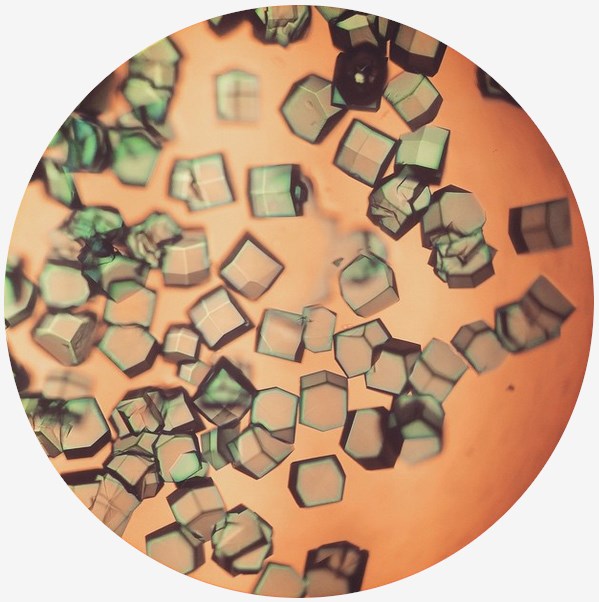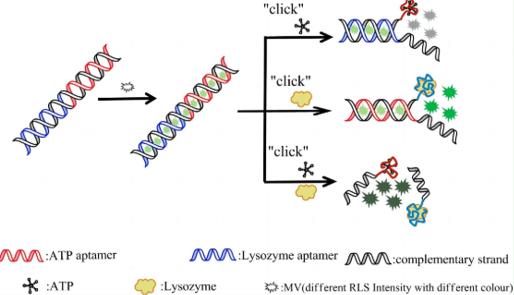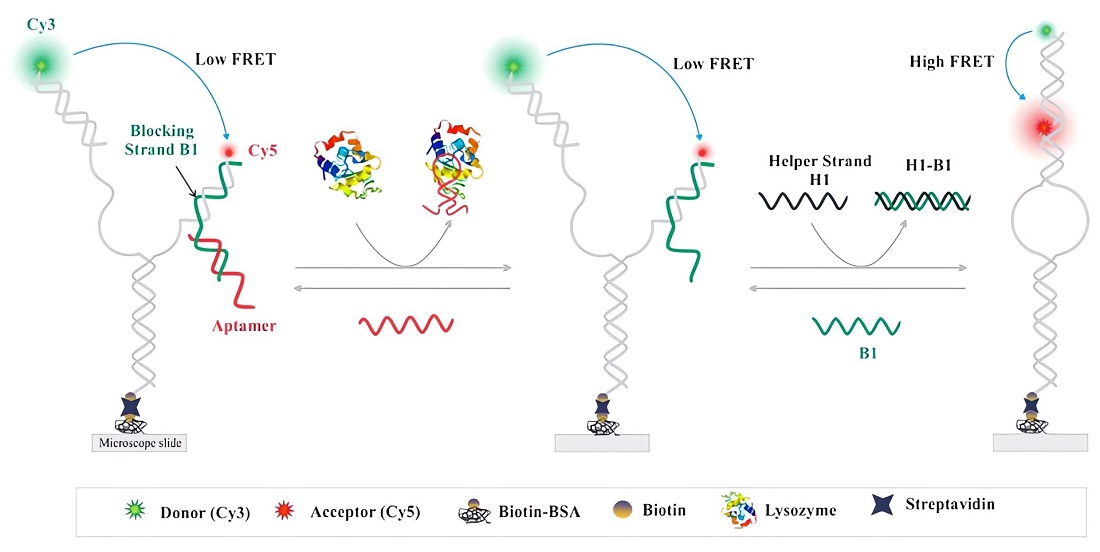Selective and rapid detection of biomarkers is of utmost importance for early-stage diagnosis to prevent fatal diseases and infections. The role of lysozyme has been illustrated to be especially important in the human immune system to prevent several bacterial infections and other chronic diseases. Having accumulated rich experience in biomarker detection, Creative Biolabs provides aptamer development and biosensor construction services to meet your lysozyme detection requirements.
Lysozyme Introduction
Lysozyme, a 14.3 kDa protein ubiquitously present in many organisms, has been identified with a variety of functions including antibacterial activity, a biomarker of several serious medical conditions, a potential allergen in foods, or a model of amyloid-type protein aggregation. Relatively small size and simplicity make it an excellent model analyte for novel methods in protein detection. Studies reported that antibodies against citrullinated variants of lysozyme are present in patients with rheumatoid arthritis (RA), which highlights the potential of lysozyme as a clinical index of these diseases.
 Distributed under CC BY-SA 4.0, from Wiki, without modification.
Distributed under CC BY-SA 4.0, from Wiki, without modification.
Detection Methods
The classical method for lysozyme determination is based on the ability of lysozyme to clear a suspension of Micrococcus lysodeikticus cells. Other methods based on the quantification of the protein amount and not its enzymatic activity include immunoenzymatic, electrophoretic, and chromatographic methods. However, these lysozyme detection methods are expensive, time-consuming, or cannot be applied for fast in-situ quantification.
Electrochemical and optical sensors have attracted increasing attention due to their versatility and ability to reduce the disadvantages of traditional methods. Next to these years, aptamer-based analytical methods have been developed towards lysozyme detection. The positive nature of lysozyme renders the protein favorable for specific binding on DNA aptamers. Various electrochemical aptasensors, based on different assay formats, aptamer selection strategies, and detection methods have been developed for lysozyme sensing in various samples.
 Fig.1 Overview of resonance light scattering-based detection scheme for lysozyme.1,4
Fig.1 Overview of resonance light scattering-based detection scheme for lysozyme.1,4
What Can We Do for You?
Creative Biolabs performs the selection of aptamers for lysozyme with high selectivity and affinity using capillary electrophoresis-SELEX (CE-SELEX). Then, the selected aptamers will be characterized for binding affinity using affinity capillary electrophoresis, fluorescence anisotropy, and surface plasmon resonance (SPR). Aptamers with nanomolar dissociation constants may function as biorecognition molecules to develop biosensors for the detection and quantification of lysozyme in food and pharmaceuticals to ensure compliance with allergen labeling and improve consumer protection.
Our Services
- Aptamer-based electrochemical lysozyme sensor development
- Various electrochemical assay formats: direct, sandwich, and competitive assays
- Evaluation of selectivity, reproducibility, and storage stability of the developed aptasensor
- Comparison of electrochemical lysozyme sensors to other detection schemes
- Aptamer conjugation
If you are interested in aptamers development for lysozyme detection, please feel free to contact us for more information or a detailed quotation.
Published Data
1. FRET-Based Detection of Lysozyme with High Selectivity and Sensitivity
 Fig.2 Schematic illustration of lysozyme aptasensor design and working principle.2,4
Fig.2 Schematic illustration of lysozyme aptasensor design and working principle.2,4
In this study, researchers developed an aptamer-based sensor (aptasensor) using single-molecule fluorescence resonance energy transfer (smFRET) to detect lysozyme. Upon binding of lysozyme, the aptasensor undergoes a conformational change, resulting in a shift from a low to a high FRET state. This method allowed sensitive detection of lysozyme down to 2.3 picomoles (30 nM), with a dynamic range up to ~2 µM, and minimal interference from similar biomolecules. The smFRET technique used significantly less aptasensor (~3000-fold less than traditional bulk fluorescence methods) and offered a more cost-effective alternative to enzymatic or antibody-based methods. Furthermore, the aptasensor could be regenerated in situ by means of toehold-mediated strand displacement (TMSD). This sensing strategy showed great promise for lysozyme detection in clinical, food industry, and biotechnological applications. Moreover, the approach could be adapted to detect other protein biomarkers by incorporating specific aptamers without altering the fluorophore-labeled DNA strands.
2. Label-Free Electrochemical Impedance Spectroscopy Aptasensor for Lysozyme Detection
 Fig.3 The steps of the label-free aptasensor for Lys detection via electrochemical grafting.3,4
Fig.3 The steps of the label-free aptasensor for Lys detection via electrochemical grafting.3,4
This study developed a disposable, label-free aptamer biosensor utilizing graphite-epoxy composite electrodes (GECs) for the detection of lysozyme via Electrochemical Impedance Spectroscopy (EIS). The aptasensor was immobilized via covalent bonding using carbodiimide chemistry, with carboxylic groups generated on the graphite through electrochemical grafting. The redox probe [Fe(CN)6]3−/[Fe(CN)6]4− was used for detection, and the frequency response data was analyzed using equivalent circuit modeling. The aptasensor displayed a linear response for lysozyme up to 5 µM and a detection limit of 1.67 µM. Its sensitivity was 0.090 µM−1 based on charge transfer resistance. The sensor showed minimal interference from proteins like cytochrome c and bovine serum albumin. It also demonstrated effective lysozyme detection in wine, with satisfactory recovery (77%), highlighting its potential for use in food matrix analysis.
References
- Chen, Feng, et al. "“Click on the bidirectional switch”: the aptasensor for simultaneous detection of lysozyme and ATP with high sensitivity and high selectivity." Scientific Reports 6.1 (2016): 18814.
- Sapkota, Kumar, and Soma Dhakal. "FRET-based aptasensor for the selective and sensitive detection of lysozyme." Sensors 20.3 (2020): 914.
- Ortiz-Aguayo, Dionisia, and Manel Del Valle. "Label-free aptasensor for lysozyme detection using electrochemical impedance spectroscopy." Sensors 18.2 (2018): 354.
- Distributed under Open Access license CC BY 4.0, without modification.
For Research Use Only.

